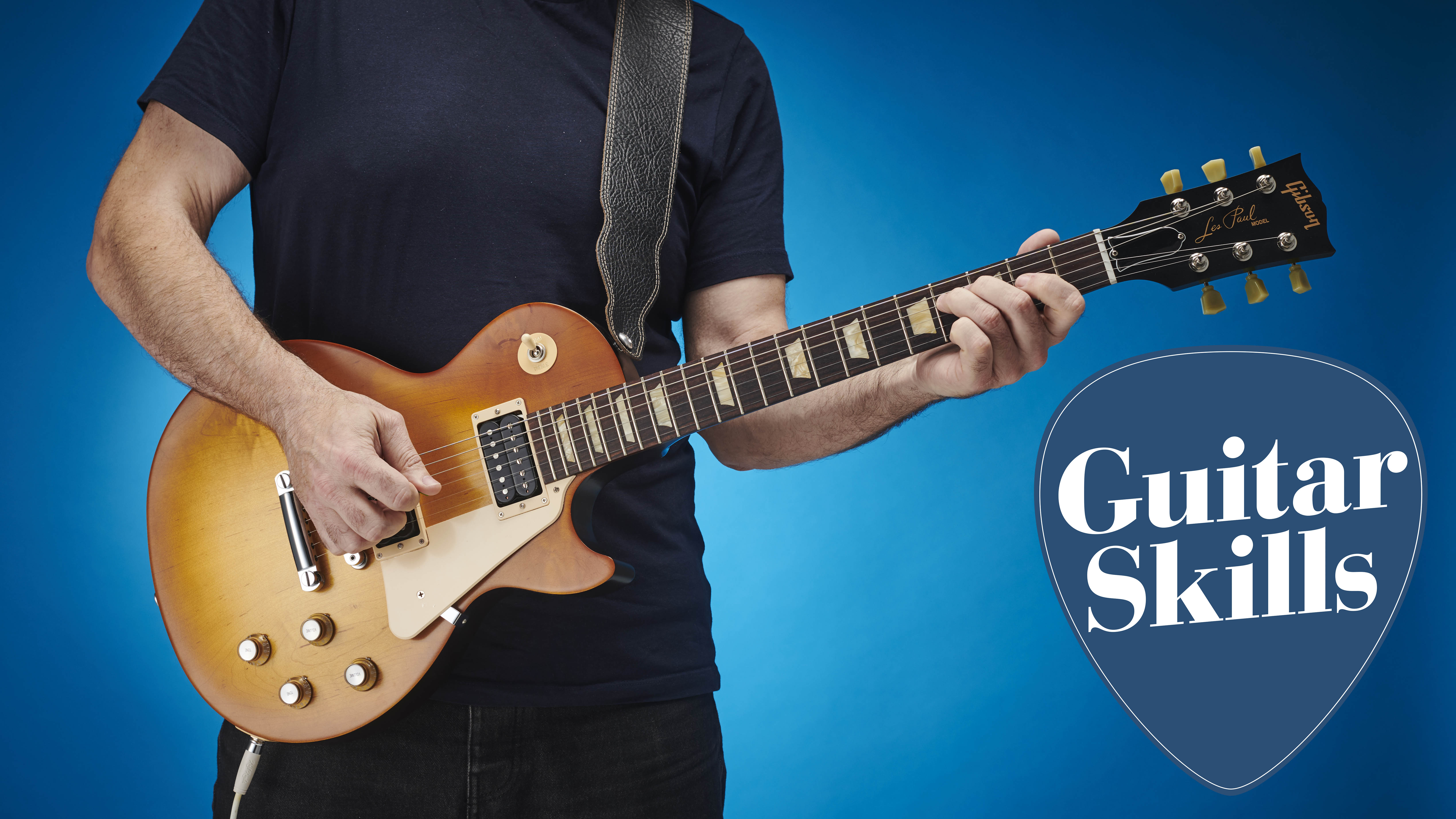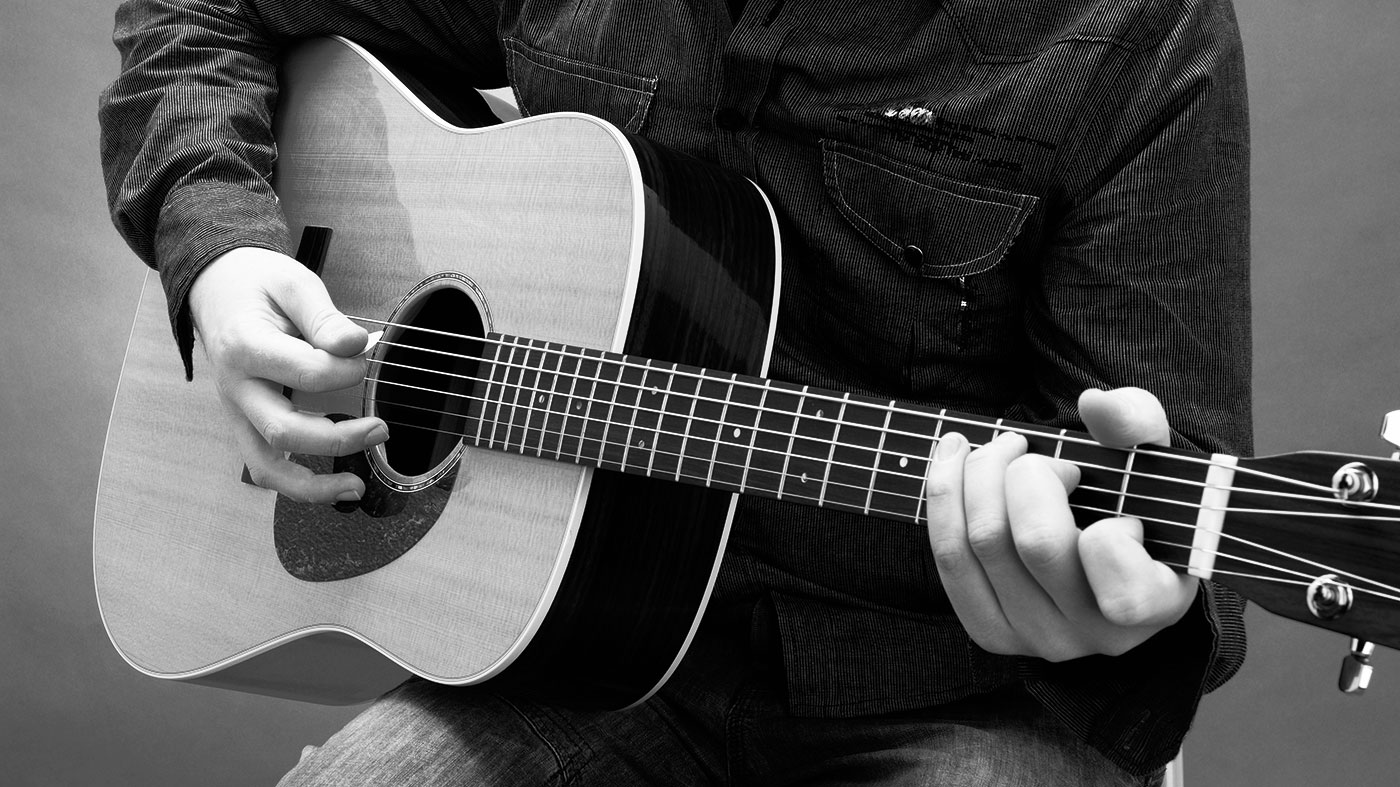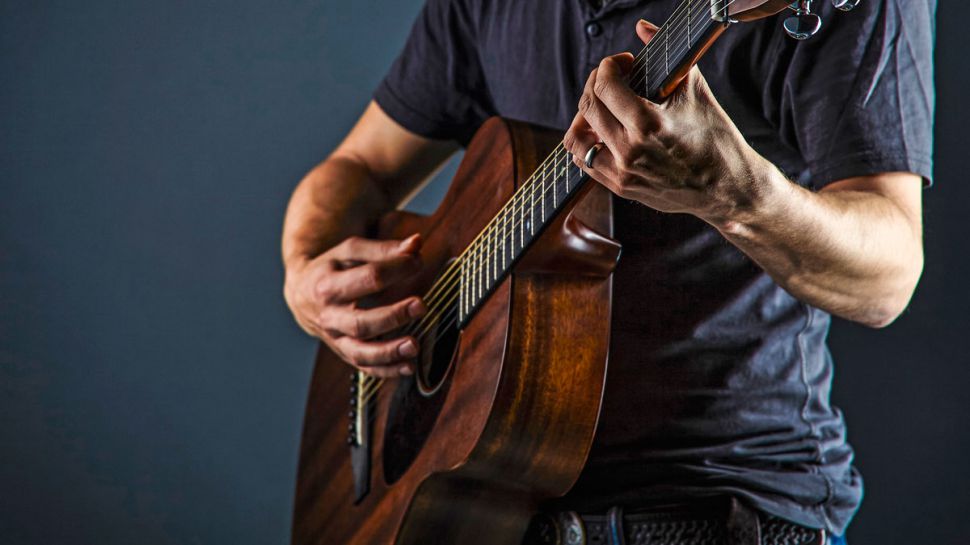Get creative with your guitar chord playing in 20 minutes
Find new ideas for old chord shapes with our lesson

Guitar skills: Once you know the open chord shapes you can turn C and G into barre chords and give your rhythm playing a boost.

Of all the open shapes, C and G are perhaps the least commonly used as barre chords, most likely due to their awkward fingering. To make things easier, guitarists use ‘partial chords’, ie, you play only a few strings of the finger-twisting full barre chords.
This practical approach allows you to easily integrate C and G shapes into your playing - and, of course, more shapes means more creative rhythm chops.
The best way to get started is to play the open C and G shapes farther up the fretboard, including that tricky first finger barre.

The best acoustic guitar strings to buy right now
It doesn’t really matter if you can’t manage the stretches (many players can’t!). At this stage your aim is to familiarise yourself with the shapes - and you can build on this as you explore the partial shapes. These tab exercises cover a mixture of styles and techniques so there’s something for everyone.
Basic arpeggios

Here we begin by moving between major and maj7 shapes (in the key of F in this case). Hopefully, you recognise the open C shape played five frets higher here. To get around the awkward G shape on the Bb chords in bar 2, we’re playing only the middle four strings. No top or bottom strings means no need to stretch. Easy!
Using the minor shape

This soul progression focuses on the upper four strings of the C and G shape. F and Ab chords are based on the C shape, while the C chord itself is based on a partial G shape. Take note of the slight alteration to the fingering to give us a minor shape on Gm. Follow the strumming pattern below the tab for a jaunty Steve Cropper vibe.
Get the MusicRadar Newsletter
Want all the hottest music and gear news, reviews, deals, features and more, direct to your inbox? Sign up here.
What chords?

At first glance this funky riff doesn’t look like it uses any chords but trust us, it does! The third, fourth and fifth notes in bar 1 outline the important notes of the G shape (in 5th position here); in bar 2, the third, fourth and fifth notes outline the C shape. The Bb and Eb notes are all-important b7th intervals giving the 7th chord sound.
Hard rock slash chords

This Van Halen/Brian May approach of using the open strings to give interesting slash chords is a great way to really milk the sound of each shape all across the fretboard. The basic chord progression is A-Bm-C#m-E and the sus4, slash chords and minor arpeggios give a more varied sound.
Practice plan
- Two minutes: Play through one exercise slowly
- One minute: Try to identify the C and G shapes
- Two minutes: Practise the changes and gradually build speed
- Try out the other examples
Once you’ve had a go at the tab exercises it’s easy to start being more creative. Examples 1 to 3 can be moved around the fretboard - just play the riffs in a higher or lower fret position to change the pitch.
Example 4 uses open strings and can’t be transposed so easily, but if you ditch the open strings you have the basis for a great rock ‘n’ roll riff that can be moved to other keys.
We’ll say it again though: try to spot the open C and G shapes in every example.
Check out more guitar lessons here
Total Guitar is Europe's best-selling guitar magazine.
Every month we feature interviews with the biggest names and hottest new acts in guitar land, plus Guest Lessons from the stars.
Finally, our Rocked & Rated section is the place to go for reviews, round-ups and help setting up your guitars and gear.
Subscribe: http://bit.ly/totalguitar










